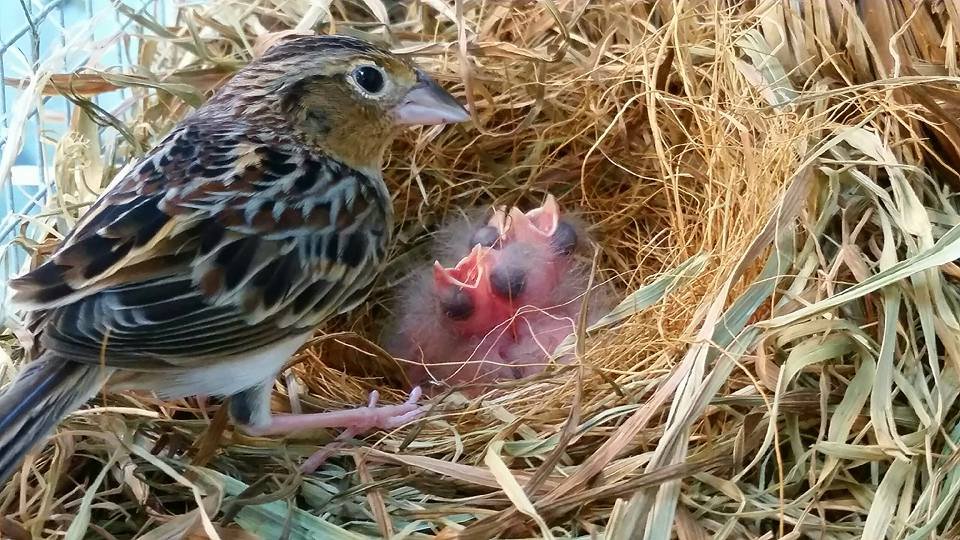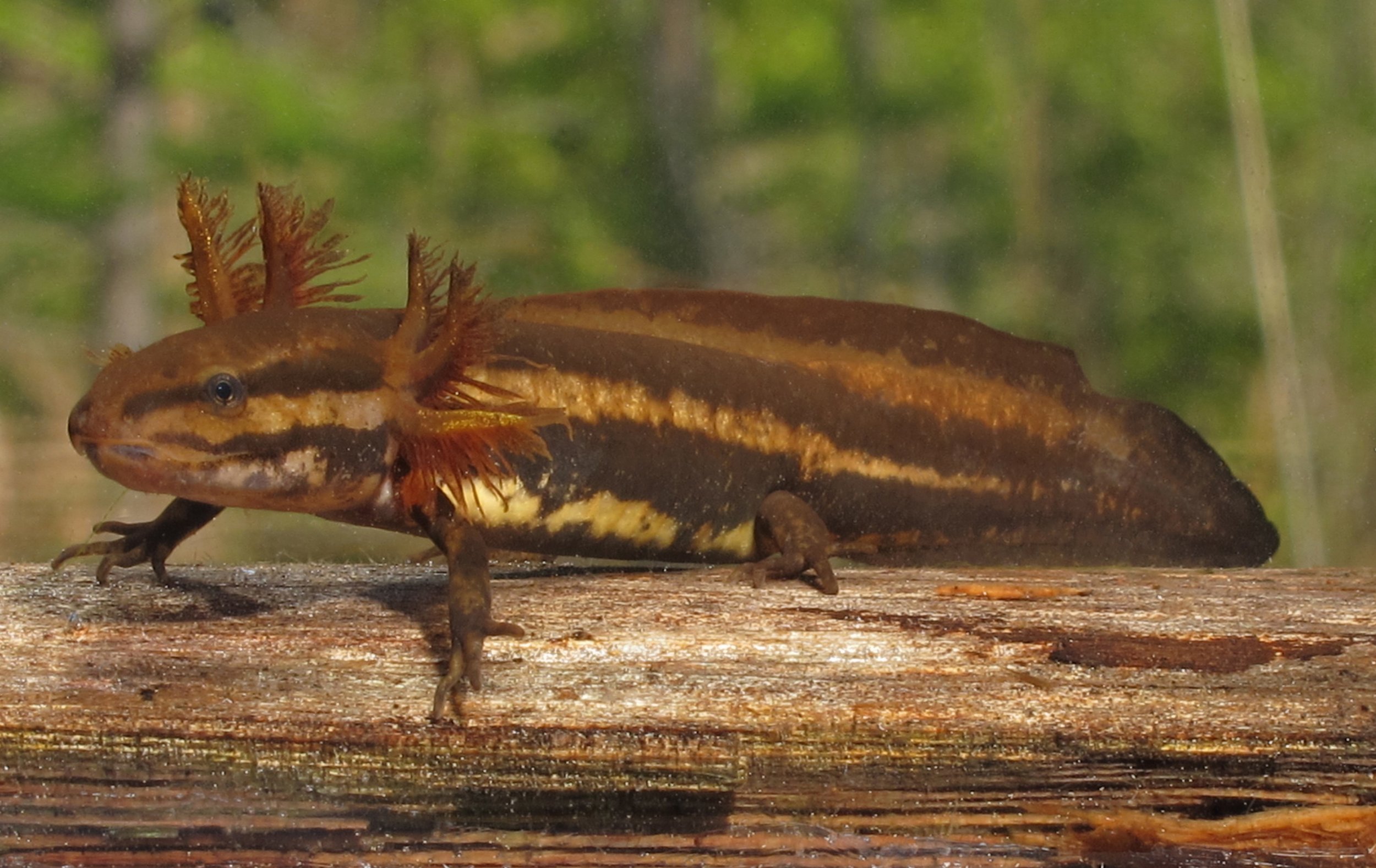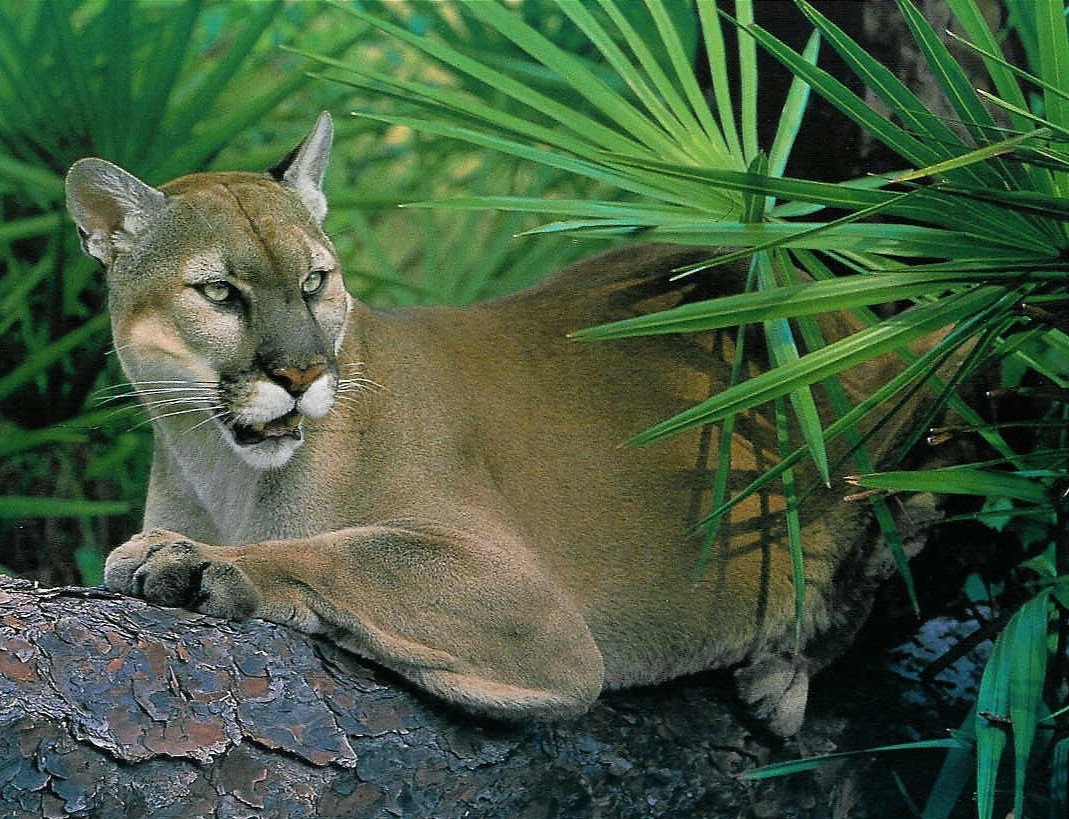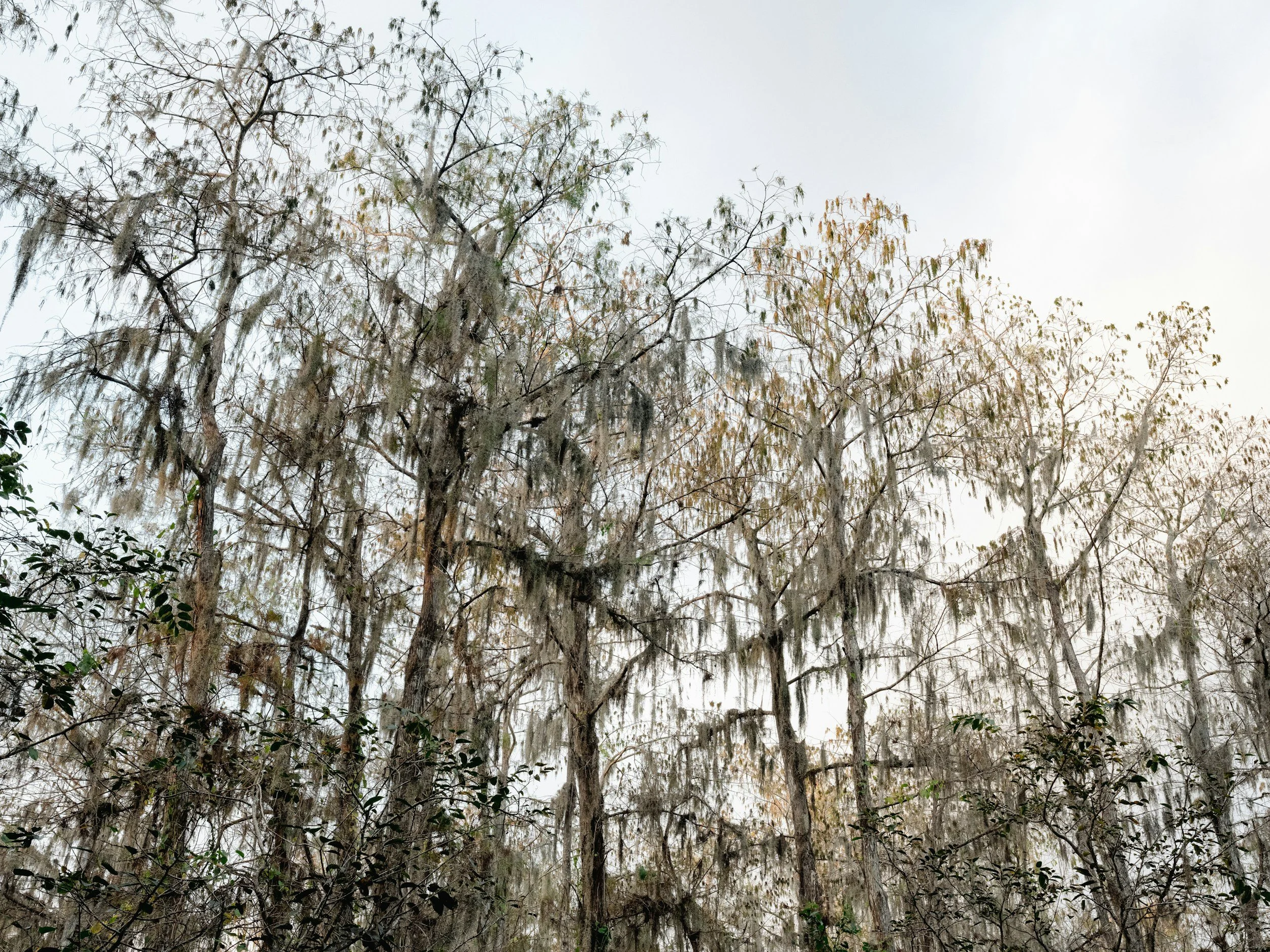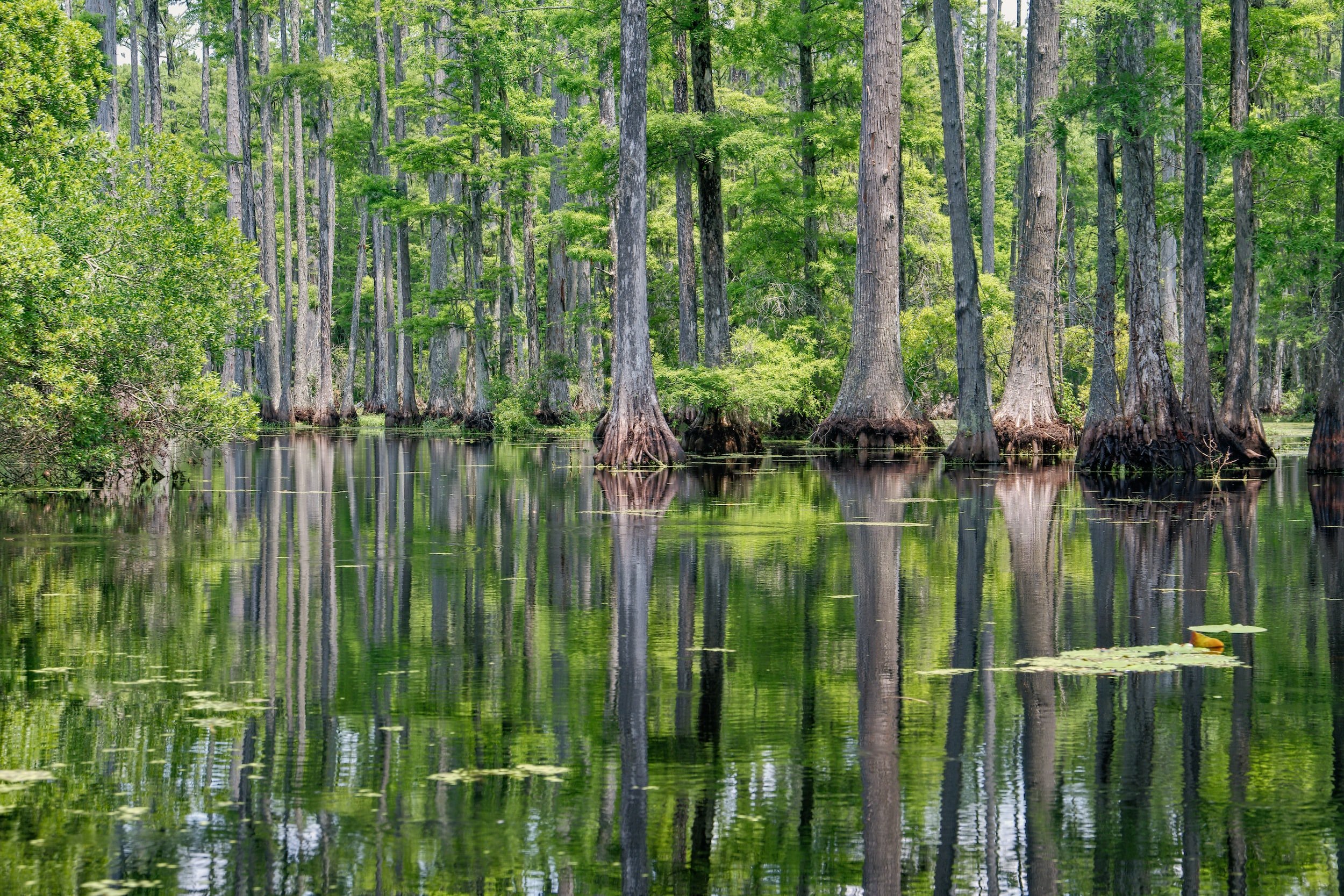
Cypress Swamps
The Florida cypress swamp is a unique type of wetland ecosystem that is found throughout the state. It is characterized by the presence of towering cypress trees, along with a variety of other plant species that have adapted to the wet, swampy conditions.
Cypress trees are the dominant feature of this habitat, and can reach heights of over 100 feet. They are typically surrounded by standing water or saturated soils, which provides a habitat for a variety of aquatic and semi-aquatic plants, such as water lilies, pickerelweed, and duckweed.
The Florida cypress swamp supports a diverse community of wildlife, including many species of birds, reptiles, and amphibians. The standing water and wet soils provide habitat for many aquatic species, such as turtles, alligators, and wading birds. The swamp also provides important habitat for several endangered species, including the Florida panther and the Florida black bear.
Cypress swamps in Florida are threatened by habitat loss, degradation, and fragmentation, as well as by changes in hydrology and the invasion of non-native plant species. Conservation efforts are important to protect and preserve these important ecosystems, as they provide many benefits to both humans and wildlife, such as carbon sequestration, water purification, and recreational opportunities.
Bald Cypress (Taxodium distichum)
The Bald cypress is a remarkable and iconic tree species found in the southeastern United States, particularly in areas with wetland habitats such as swamps, marshes, and riverbanks. It is renowned for its ability to thrive in waterlogged conditions and its distinctive features that make it stand out in the landscape.
Bald cypress trees are large and can reach impressive heights of up to 100-120 feet (30-37 meters) or even taller under optimal conditions. They have a straight, tapering trunk that contributes to their stately appearance.
The leaves of bald cypress are deciduous, meaning they shed their leaves annually. The leaves are flat and needle-like, measuring about 1/4 to 3/4 of an inch in length. They are arranged in an alternating pattern along the stems and branches. The bark of younger bald cypress trees is grayish-brown and smooth, while the bark of mature trees becomes deeply furrowed and develops a reddish-brown coloration. They produce small, round cones that are about 3/4 to 1 inch in diameter. These cones are green when young and turn brown as they mature. The cones are composed of numerous scales that contain seeds.
Adaptations to Wetland Habitats:
"Knees" or Pneumatophores: One of the most distinctive features of bald cypress trees is the development of "knees" or pneumatophores. These are root extensions that protrude above the water's surface in swampy environments. While their exact function isn't fully understood, they are believed to help the tree obtain oxygen from the air in waterlogged soils.
Buttressed Base: The base of the trunk of mature bald cypress trees often develops pronounced buttresses, which are flared, supportive structures that help stabilize the tree in soggy soil.
Ecological Importance:
Bald cypress trees provide essential habitat for a wide variety of wildlife. Their branches and foliage offer nesting sites for birds, while the waterlogged habitats they create are home to various aquatic and semi-aquatic organisms.
In wetland areas, bald cypress trees help manage water flow and prevent erosion. Their root systems stabilize the soil and reduce the risk of flooding during heavy rains.
The dense wood and wetland soils of bald cypress forests contribute to carbon sequestration, helping to mitigate climate change by storing carbon.
Cypress Dome
A cypress dome is a part of cypress swamp habitats. They are characterized by the presence of a circular stand of bald cypress trees that grows in the center of a depression or shallow basin. The trees form a dome-shaped canopy that towers over the surrounding wetland vegetation.
The basin or depression surrounding the cypress dome is typically filled with water, which provides habitat for a variety of aquatic and semi-aquatic plants, such as water lilies, duckweed, and cattails. The soils in the area are often saturated, which provides an ideal habitat for a variety of wetland plant species.
The water in cypress domes may be relatively still or slow-moving. It can be supplied by rainfall, groundwater seepage, or adjacent water bodies. The water levels can fluctuate seasonally based on rainfall and other environmental factors.
Cypress domes are dominated by cypress trees, particularly bald cypress, which are well adapted to wetland conditions. The cypress trees often form a dense canopy that shades the water, helping to maintain suitable conditions for various aquatic plants and animals. Like other wetland ecosystems, cypress domes support diverse plant and animal species. The wetland environment provides habitat for amphibians, reptiles, birds, insects, and aquatic organisms.
Cypress domes are important habitats for various species, providing breeding and nesting sites, food sources, and shelter for many wildlife species, including wading birds, turtles, frogs, and fish.
Cypress domes can be found within larger cypress swamp habitats, often interconnected with other wetland types. They contribute to the overall biodiversity and ecological functions of these wetland ecosystems. While cypress domes share some similarities with larger cypress swamps, their unique topography and hydrology create distinct microenvironments that support specialized plant and animal communities.
Endangered Species Living in Cypress Swamps
Florida Grasshopper Sparrow
Red-cockaded Woodpecker
Miami Blue Butterfly
Wood Stork
Florida Torreya
(Torreya taxifolia)
Florida Key Deer
Swamp Pink
(Helonias bullata)
Frosted Flatwoods Salamander
Schaus' Swallowtail Butterfly
Florida Panther
Gopher Frog
Delmarva Peninsula
Bumble Bee
Florida State Parks with Cypress Swamp Habitats
Highlands Hammock State Park - Located in Sebring, FL. Cypress Swamp Trail is an easily accessible boardwalk winding through ancient bald‑cypress trunks.
Fakahatchee Strand Preserve State Park - Located on Copeland, FL. Another easily accessible boardwalk, Big Cypress Bend Boardwalk “takes you right into the heart of the largest royal‑palm and bald‑cypress swamp in the world.”
Edward Ball Wakulla Springs State Park - Located in Wakulla Springs, FL. Best by riverboat tour.








